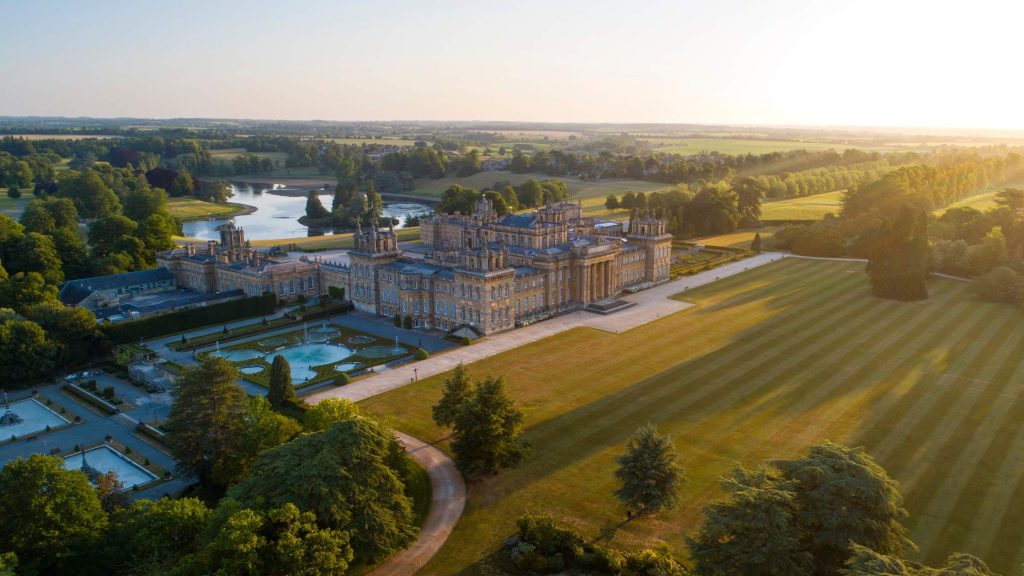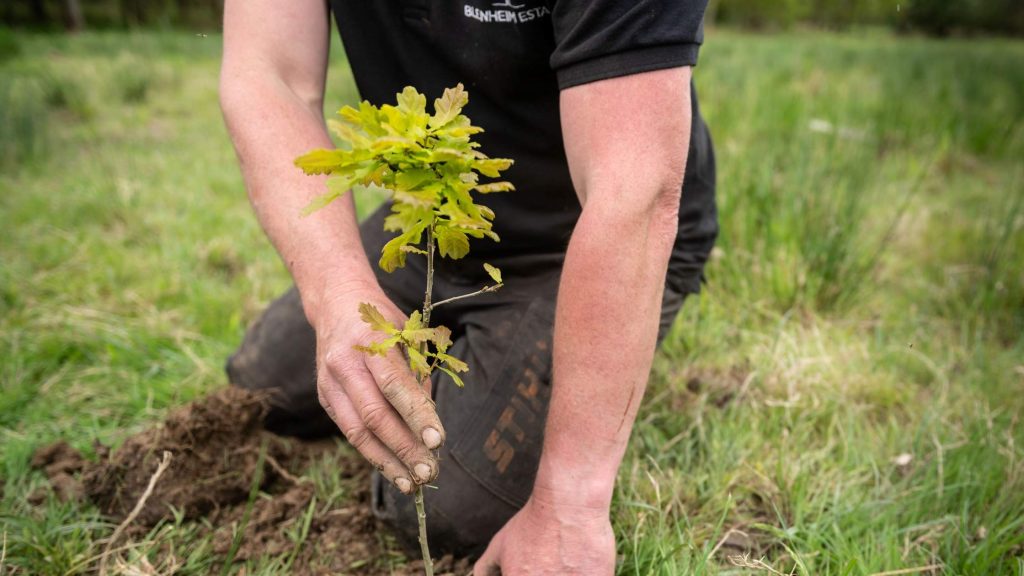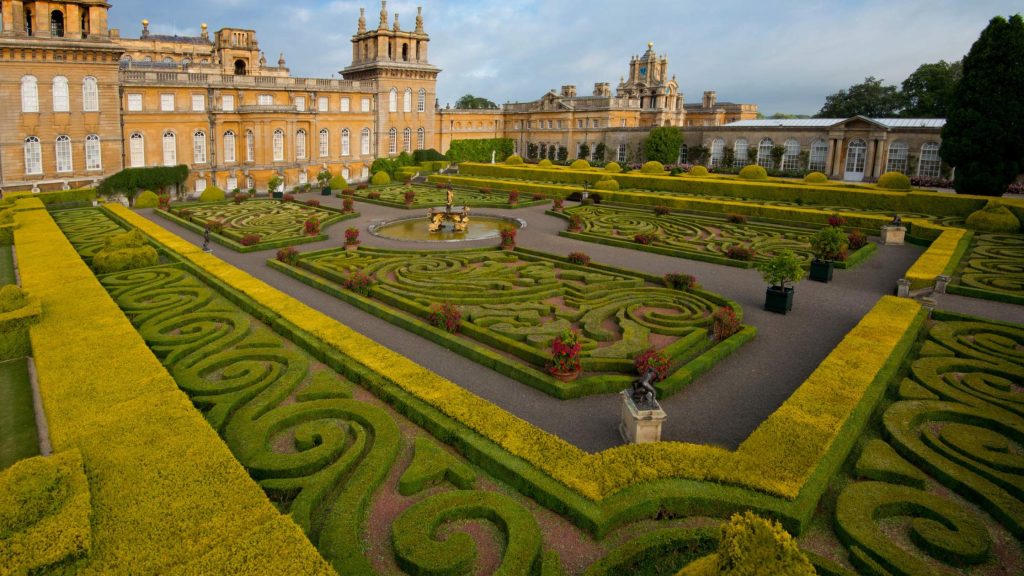The expression ‘great oaks from little acorns grow’ is nowhere more true than on the Blenheim Estate, where over 20,000 acorns have been collected this year alone as part of its extensive in-house tree growing programme.
In 2022 Blenheim made a pioneering pledge: to become carbon neutral on scopes 1-3 of the Greenhouse Gas protocol by 2027 and to remove 230,000 tonnes CO2e from the atmosphere by 2050. It’s an ambitious target but one they hope to achieve with a variety of ground-breaking projects.

Blenheim Palace and Estate is home to the greatest number of ancient oak trees anywhere in Europe, with some of the trees at the UNESCO World Heritage Site dating back to around 1000 AD.
“By carefully propagating and protecting seedlings grown from acorns produced by the original oaks we will be able to ensure the legacy of these great survivors will live on into the future. ”
Head Forester, Nick Baimbridge
The Forestry team at Blenheim Estate has been collecting acorns since 2016 to ensure the incredible trees will still be there hundreds of years from now. By using their own stock, they also reduce the risk of external infection and disease.
Rob Burgess, Blenheim Estate Forester, collected 1,000 acorns in 2016, and began the process of seeding them and placing them within the greenhouse, to inevitably plant in the Spring.
In 2020, 11,400 acorns were collected, which developed into 10,200 oak trees. This year, Rob has collected 20,000 acorns as well as 50,000 other seedlings from 20 species of tree, including beech, sycamore, hornbeam, horse chestnut and cherry bark.

Rob begins collecting acorns in late August and September, once they have fallen naturally from the trees. Once collected, the acorns will be skinned and put into a bucket of water for 24 hours; if any float, it means that they aren’t suitable for planting.
The acorns that sink to the bottom of the bucket are then skinned, dried and put into a mixture of grit and compost which is turned once a week until they are ready to be seeded in December. After they are seeded, the seedlings are placed into the greenhouse where the Forestry team usually see sprouting in early spring.
The success of this process is now clear to see – seedlings from 2016 that were planted in the Parkland are now sprouting out of their tubes and are measuring around one to two feet high.
We’re extremely fortunate that so many of these venerable trees have survived together here at Blenheim.
Head Forester, Nick Baimbridge
Planting tree saplings is one of the most effective ways of supporting the environment. Once fully grown, a large tree is said to provide the daily oxygen for four people, which means that, once fully grown, the 20,000 trees that Blenheim Estate will plant in 2024 alone will provide the equivalent oxygen needed by 80,000 people each day.

As well as tree planting initiatives Blenheim Estate are working towards significant energy savings by converting to electric cars, LED lighting and insulating roofs across the Estate. They have also focused efforts on green renewable energy projects including biomass, solar and hydro power.
It’s exciting to see much-loved stately properties such as Blenheim striving towards a greener future for us all.
You can learn more about Blenheim Palace and Estate sustainability plan here.




